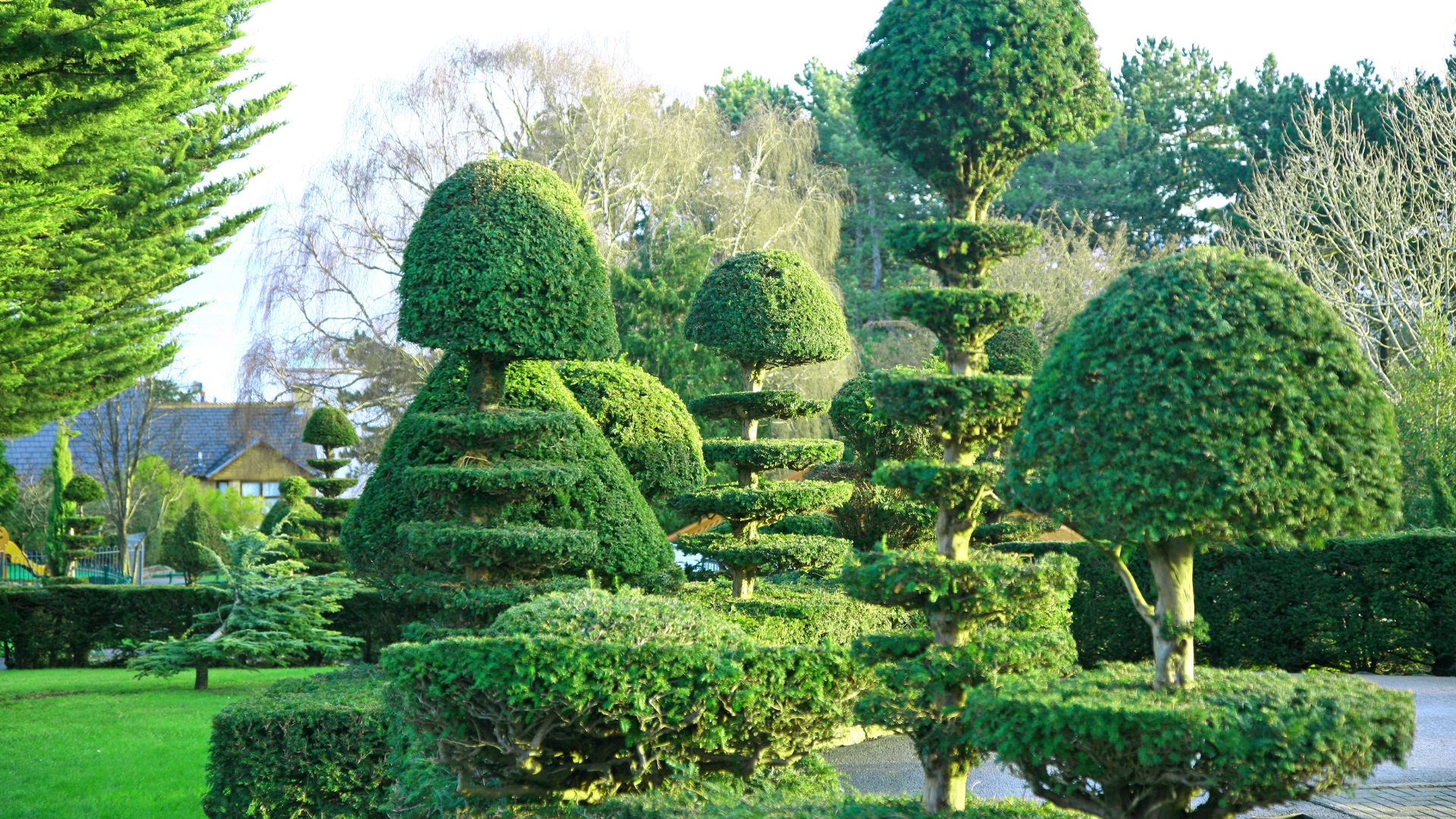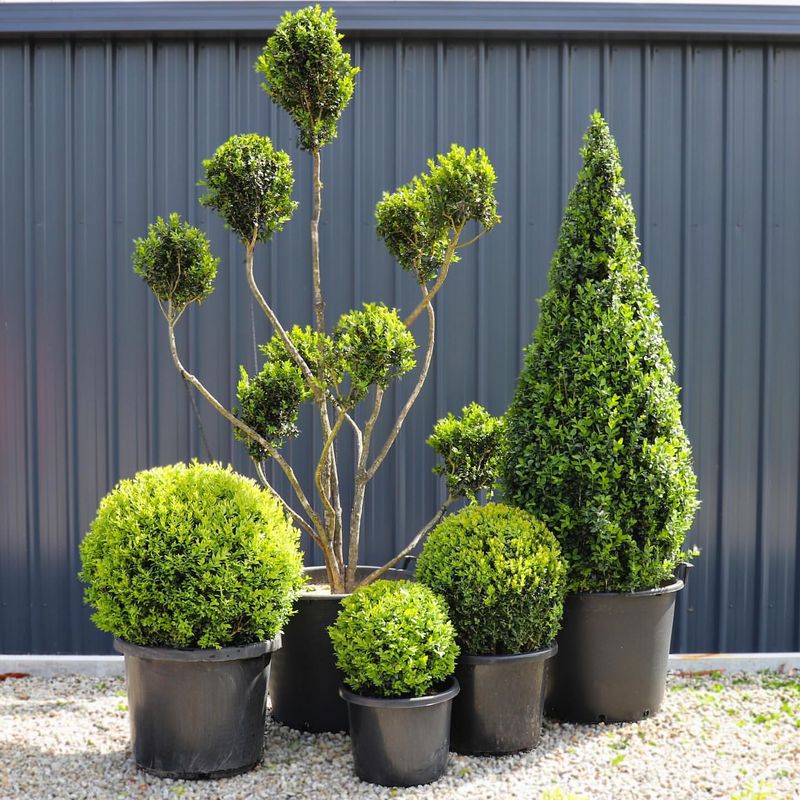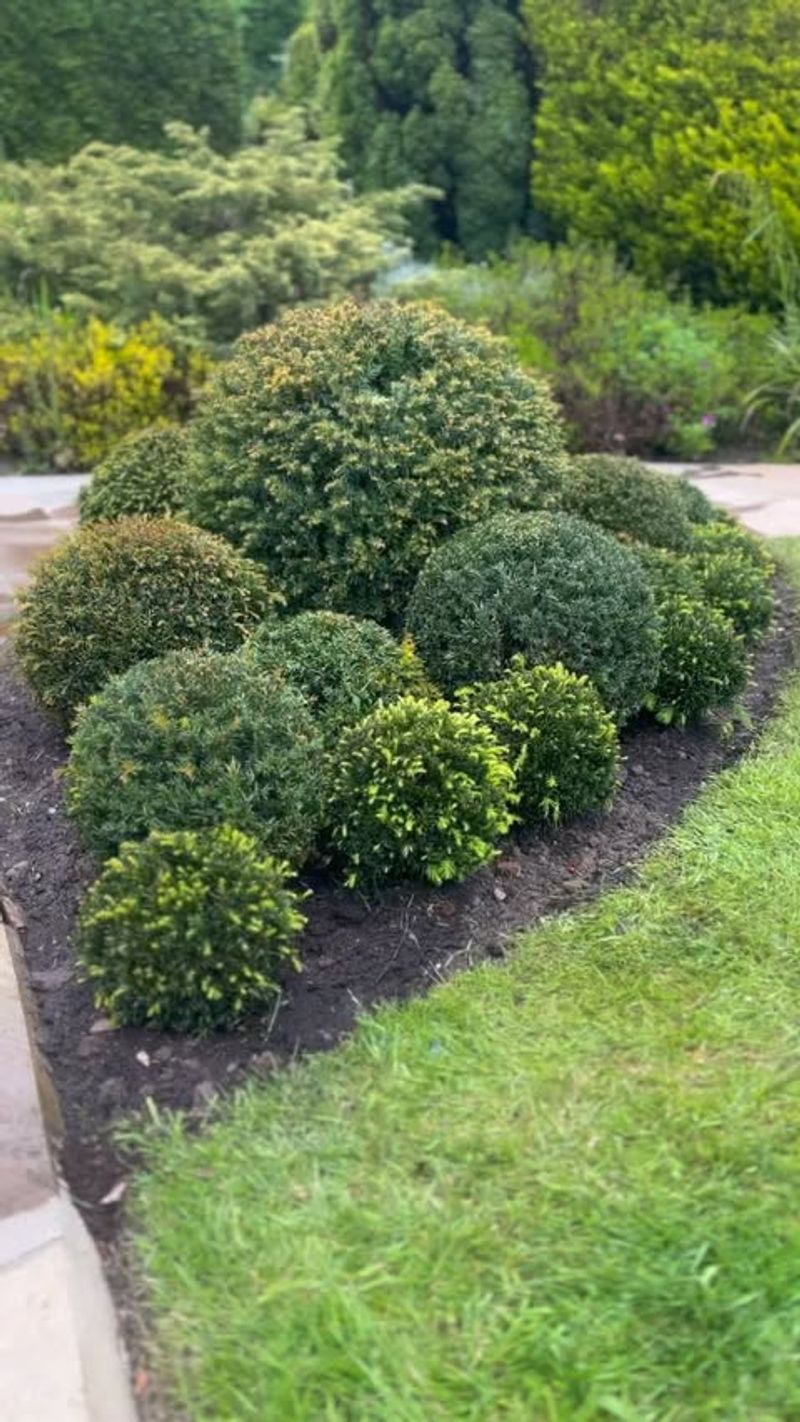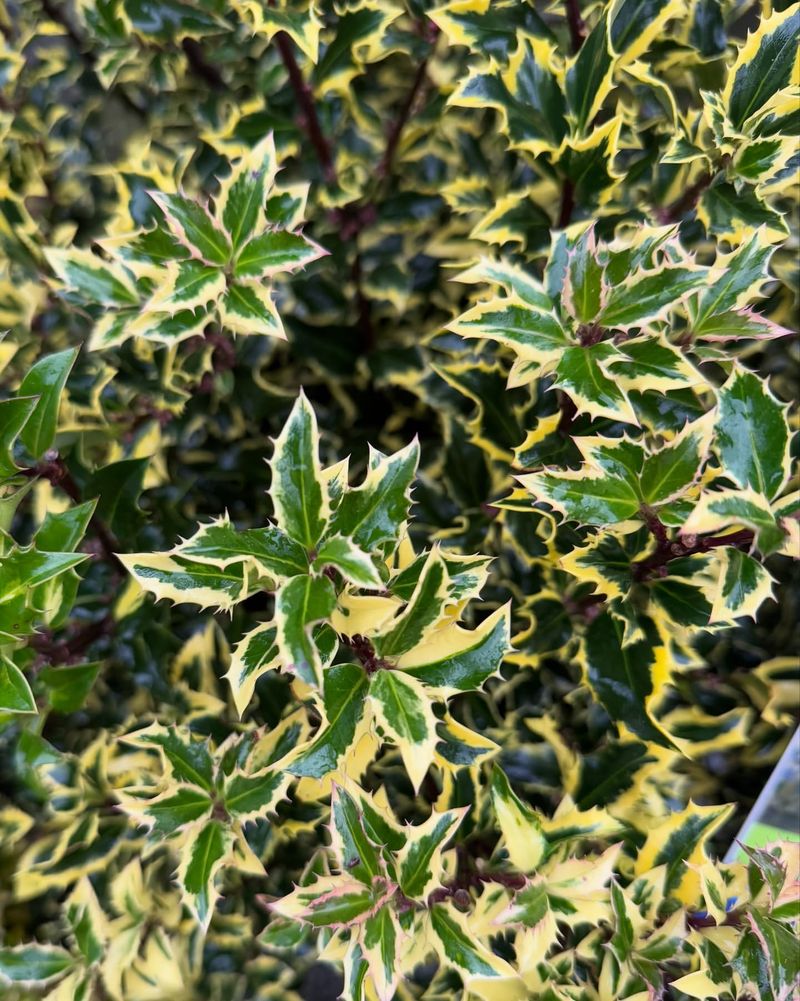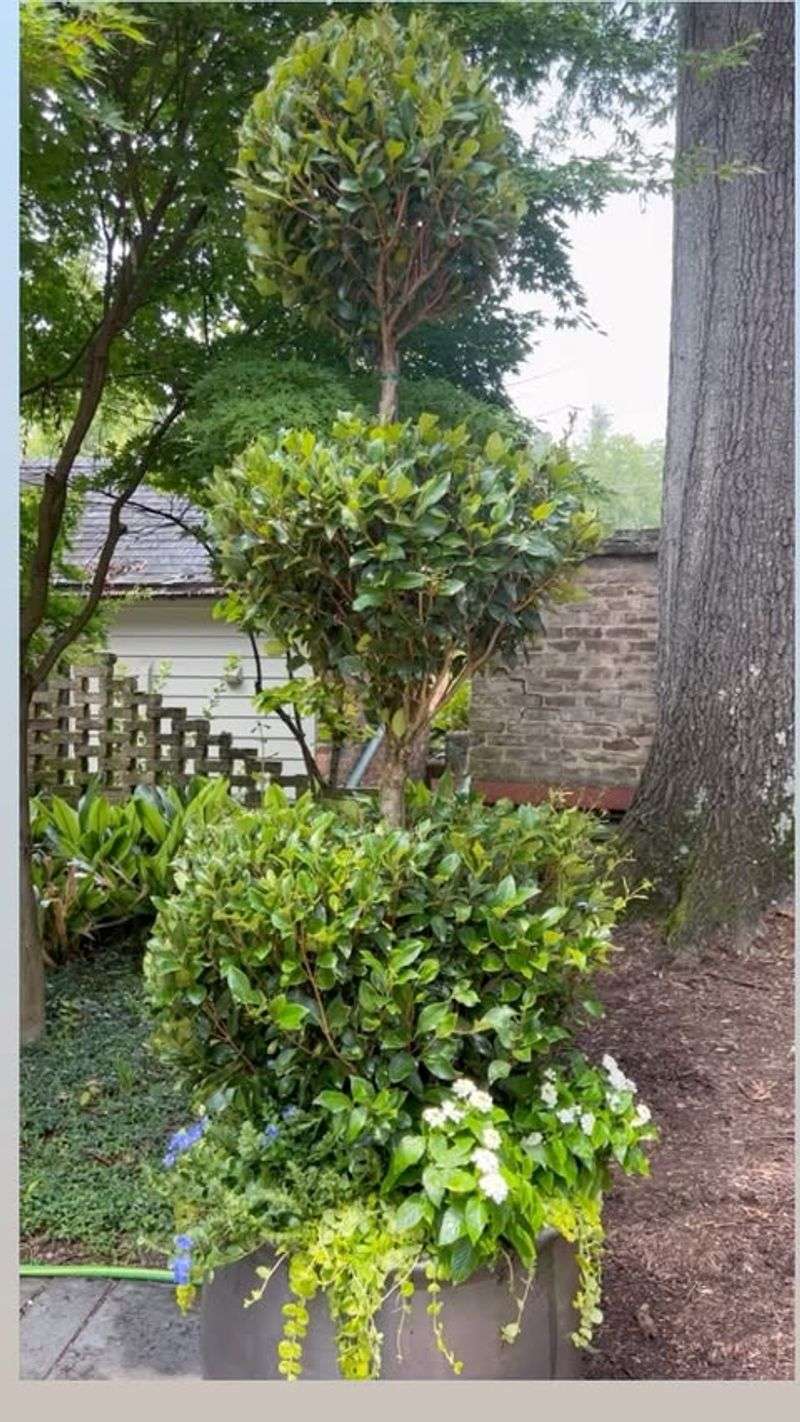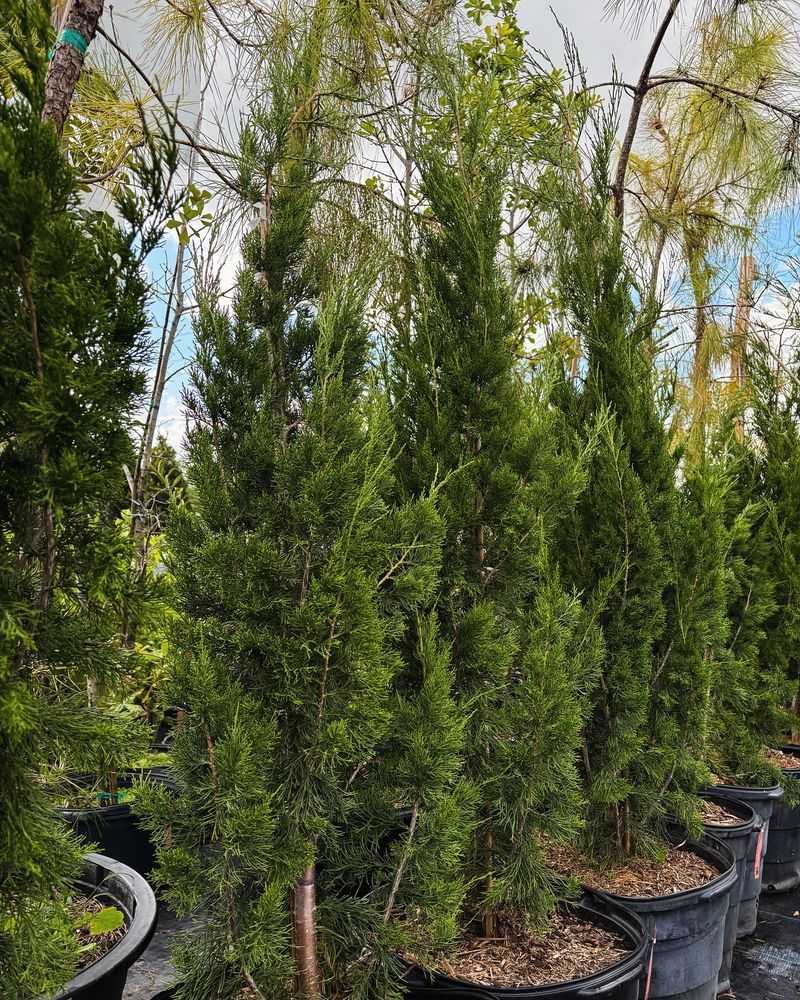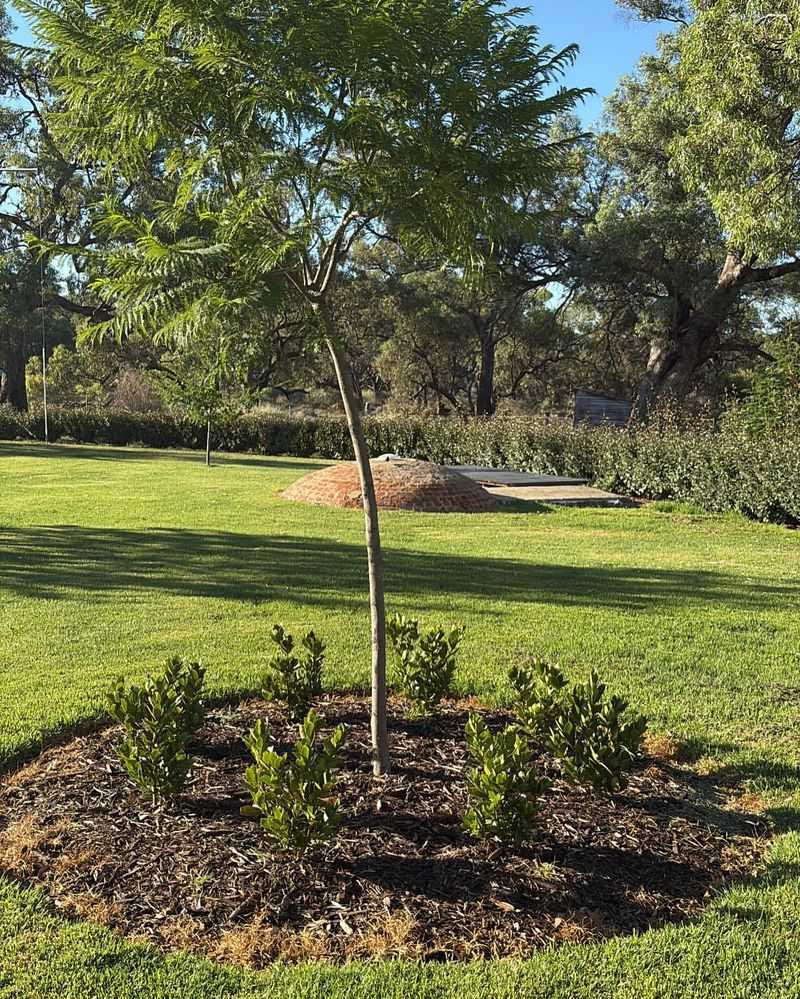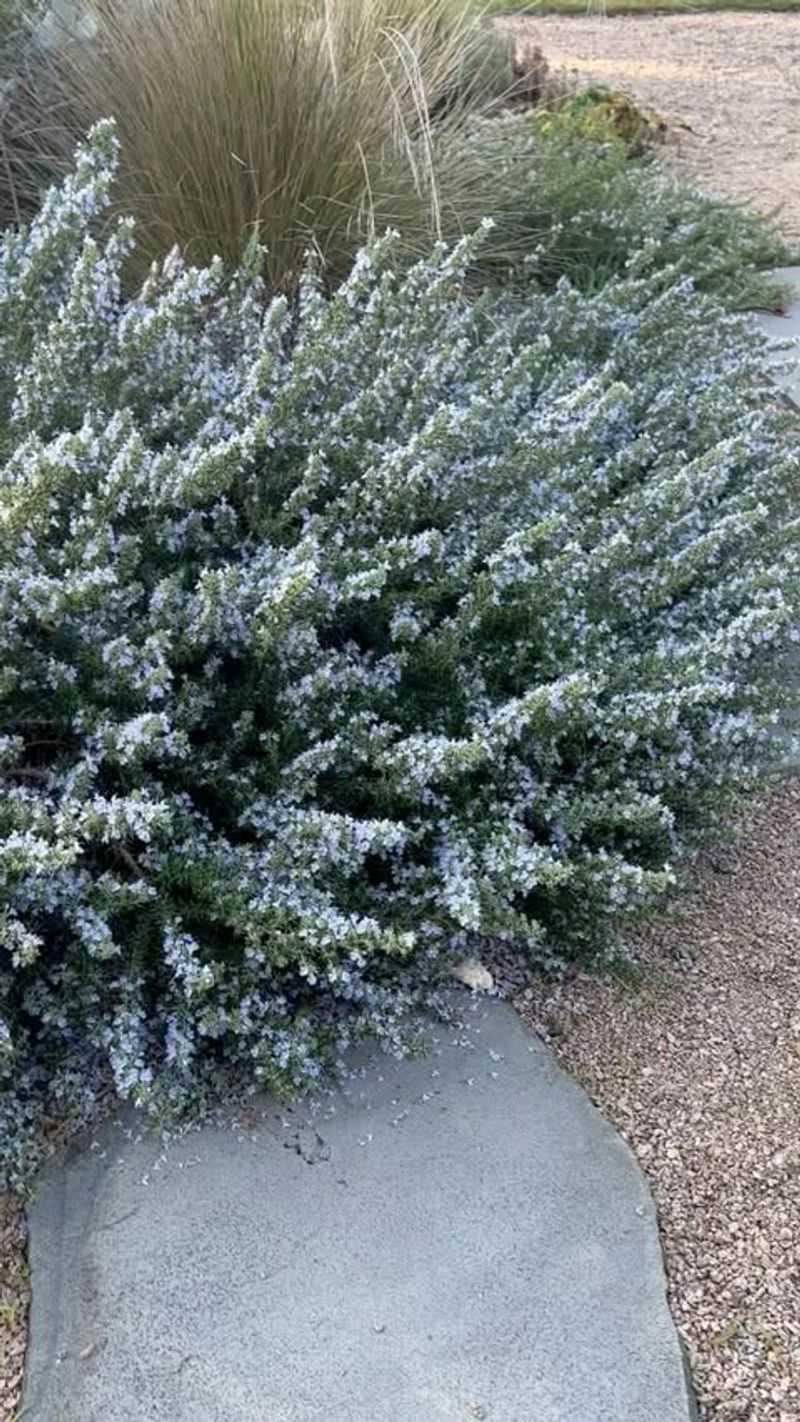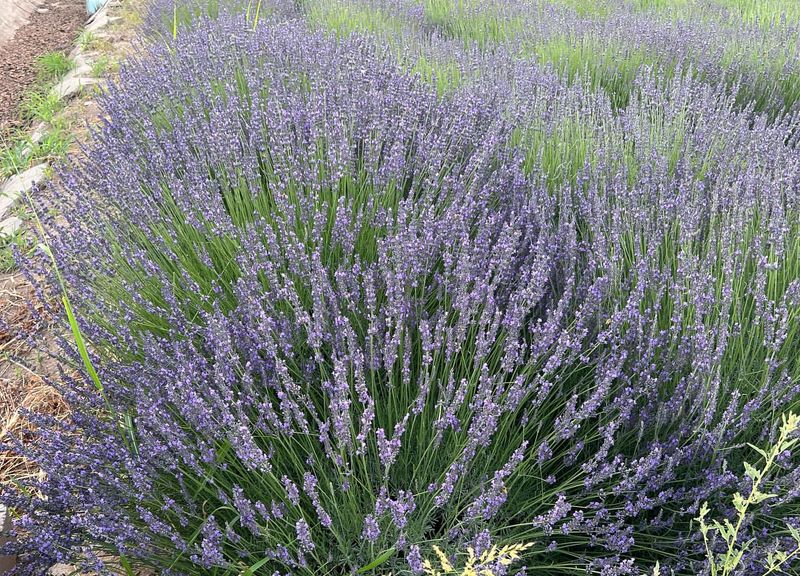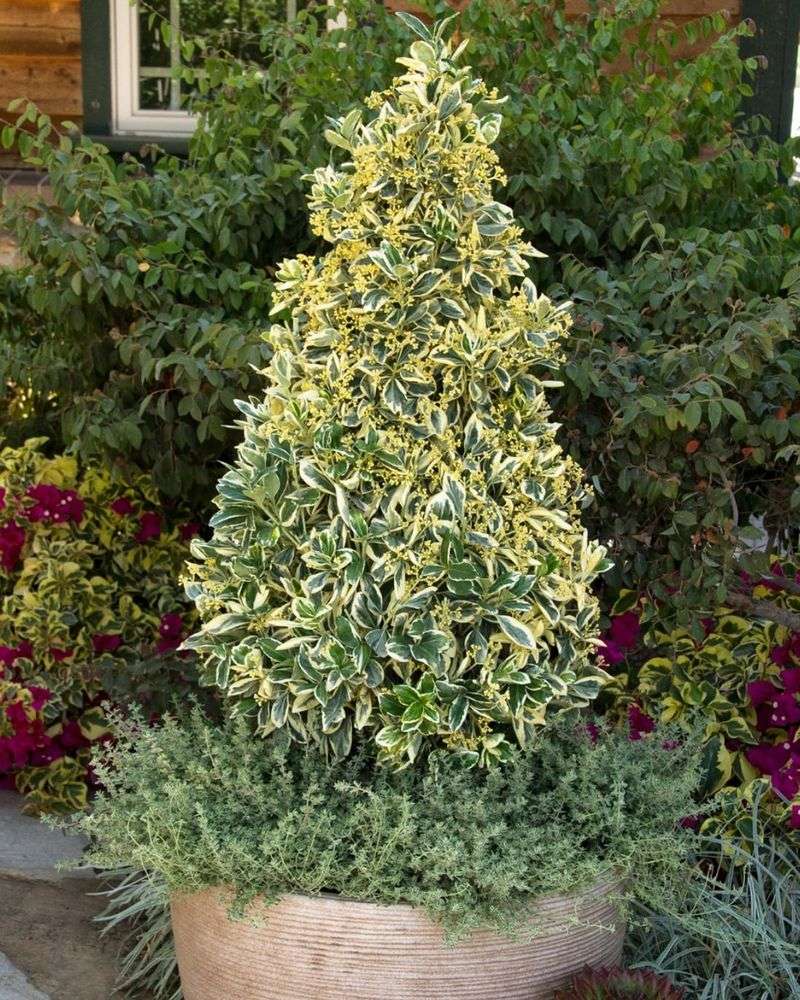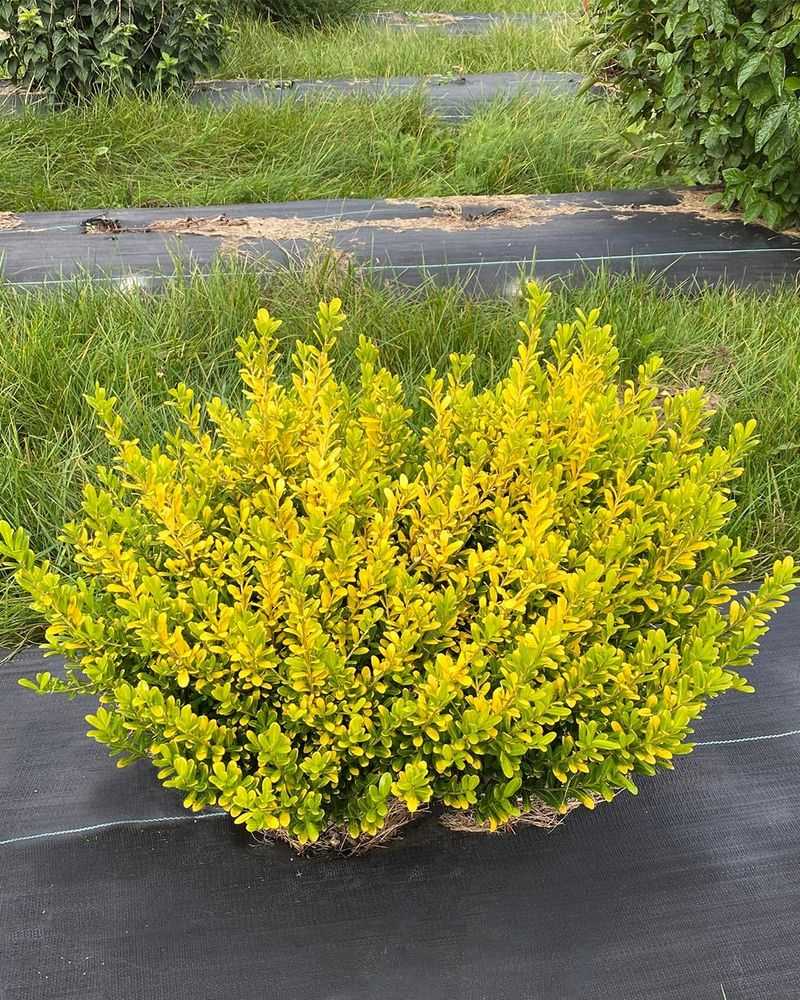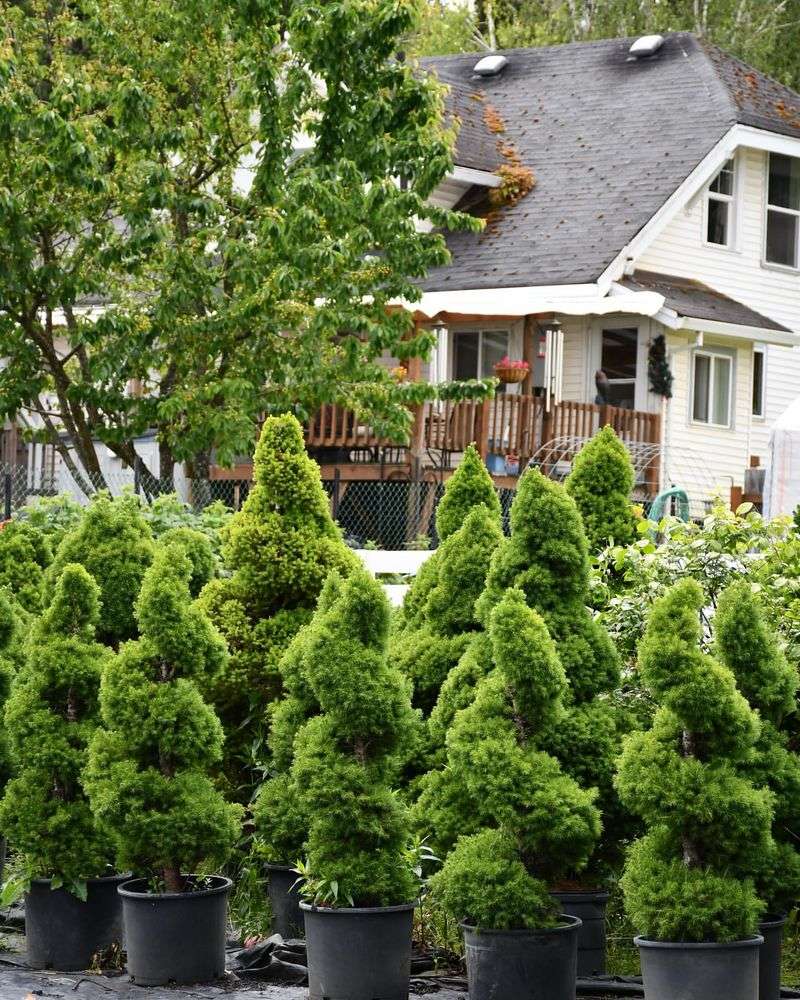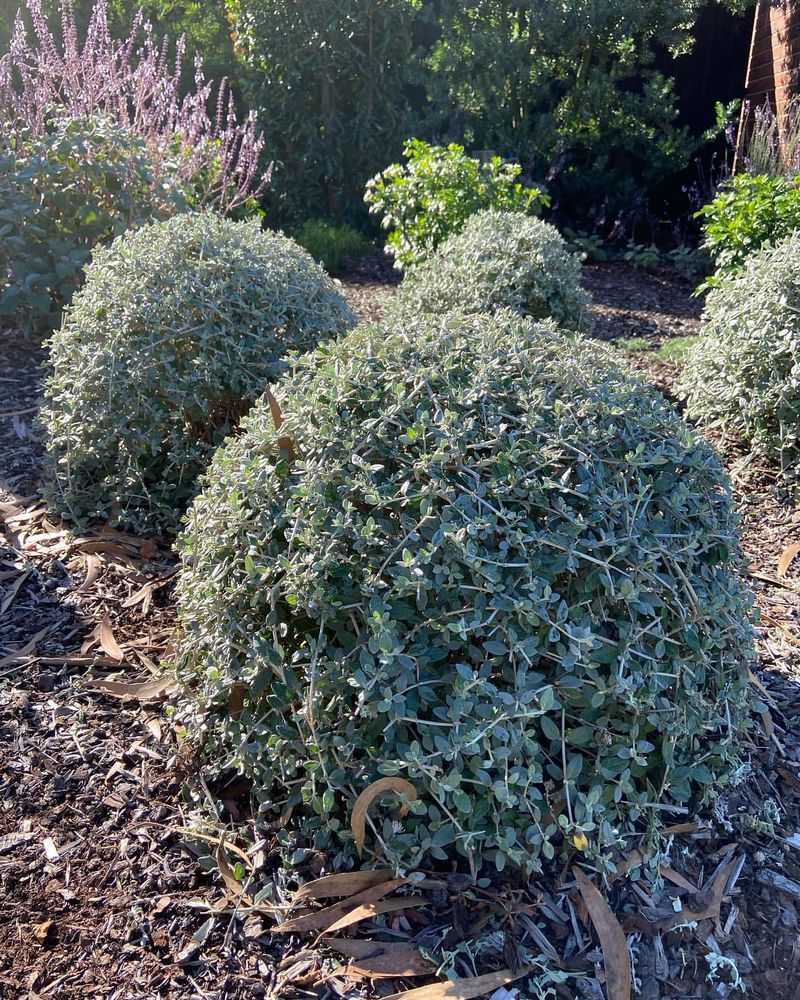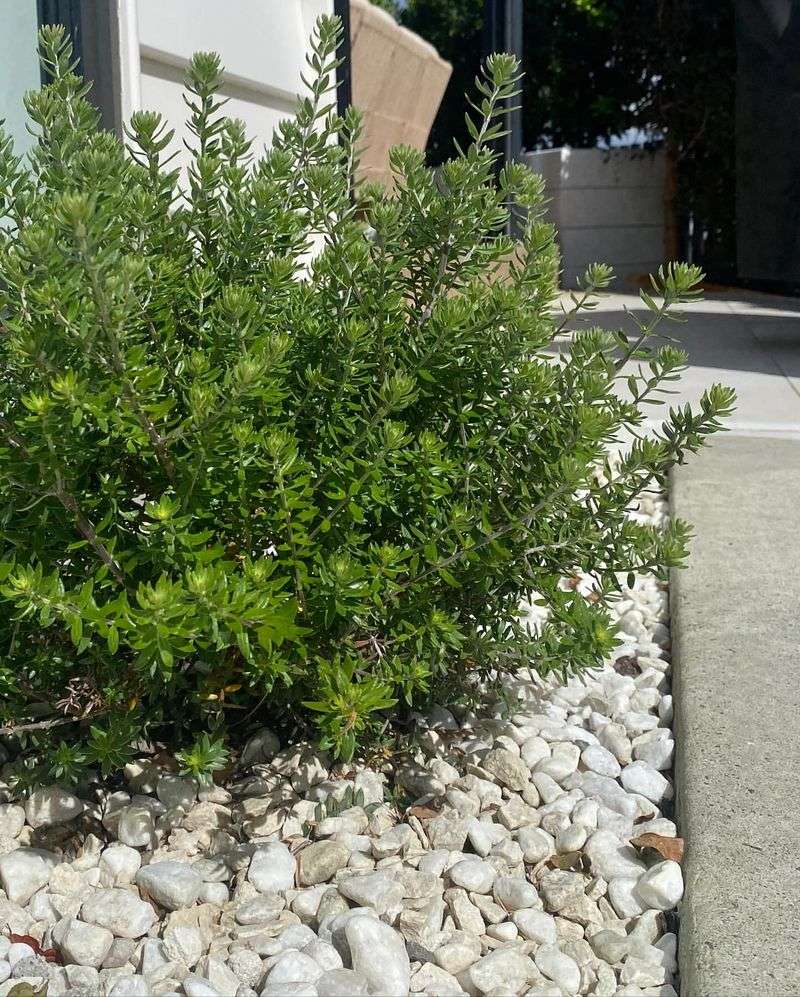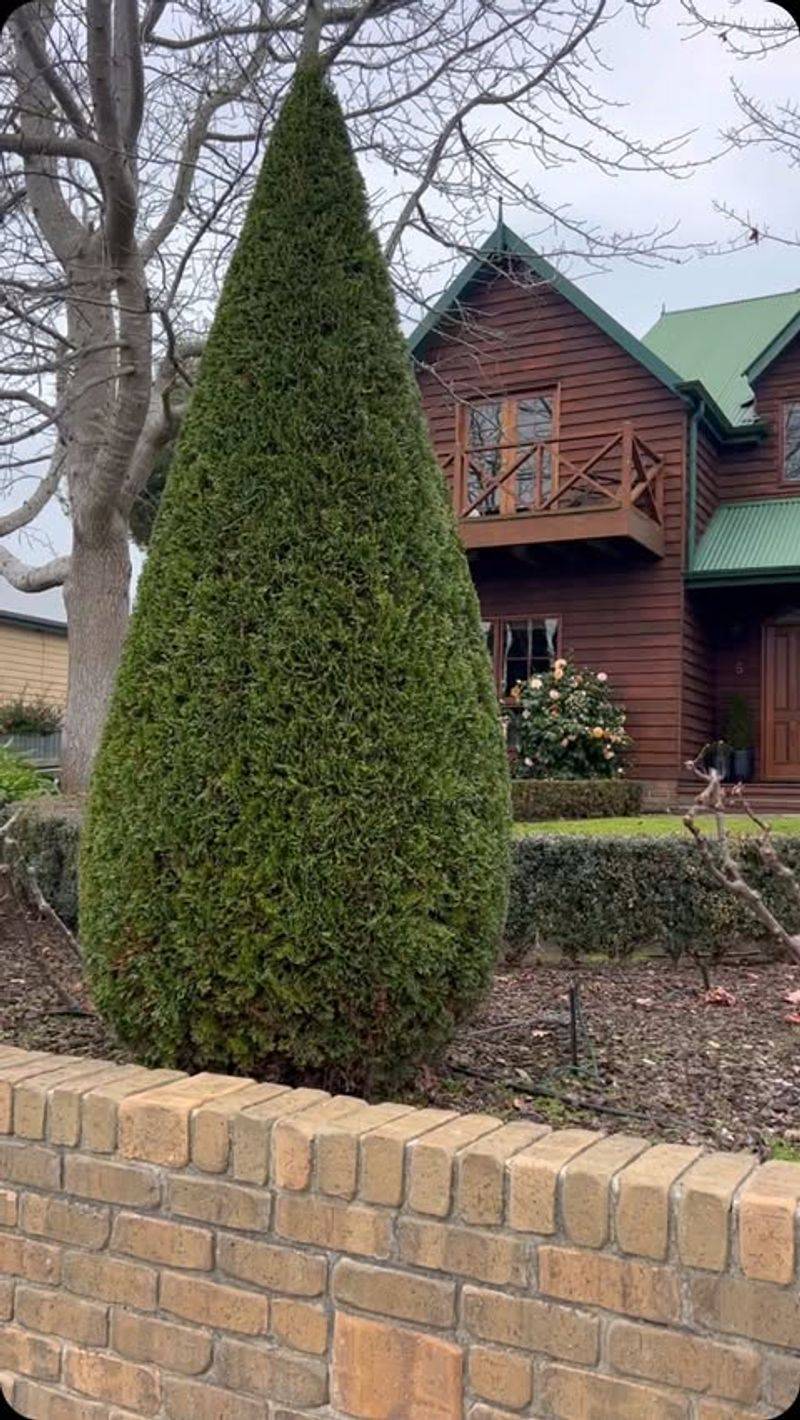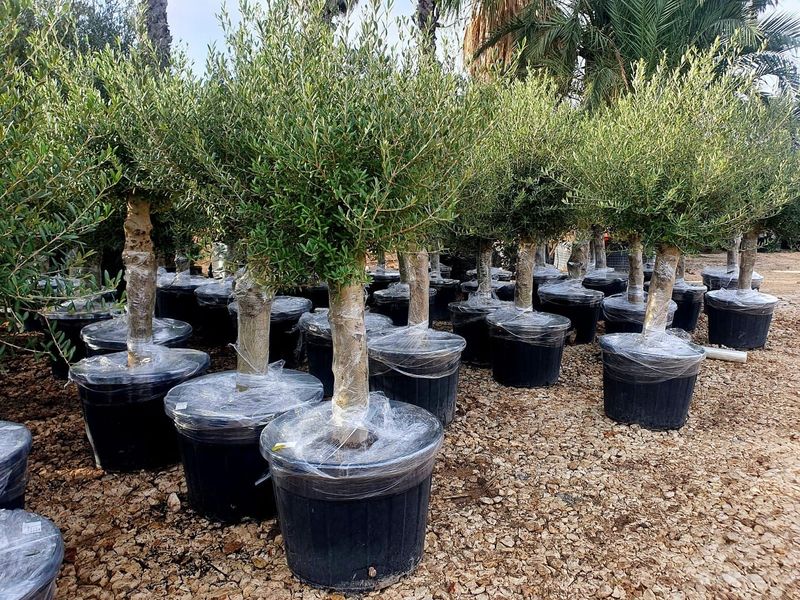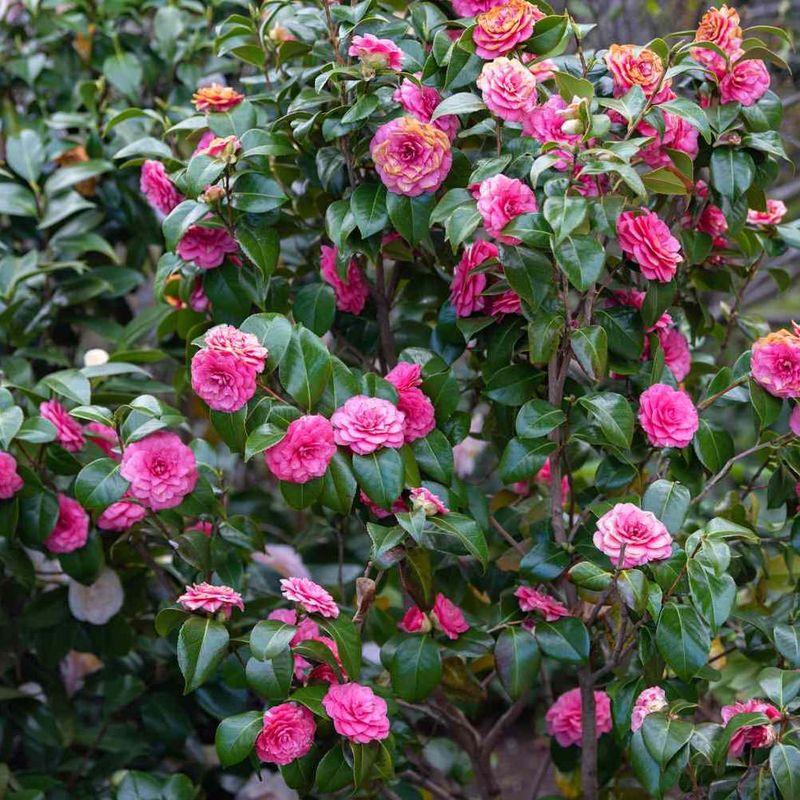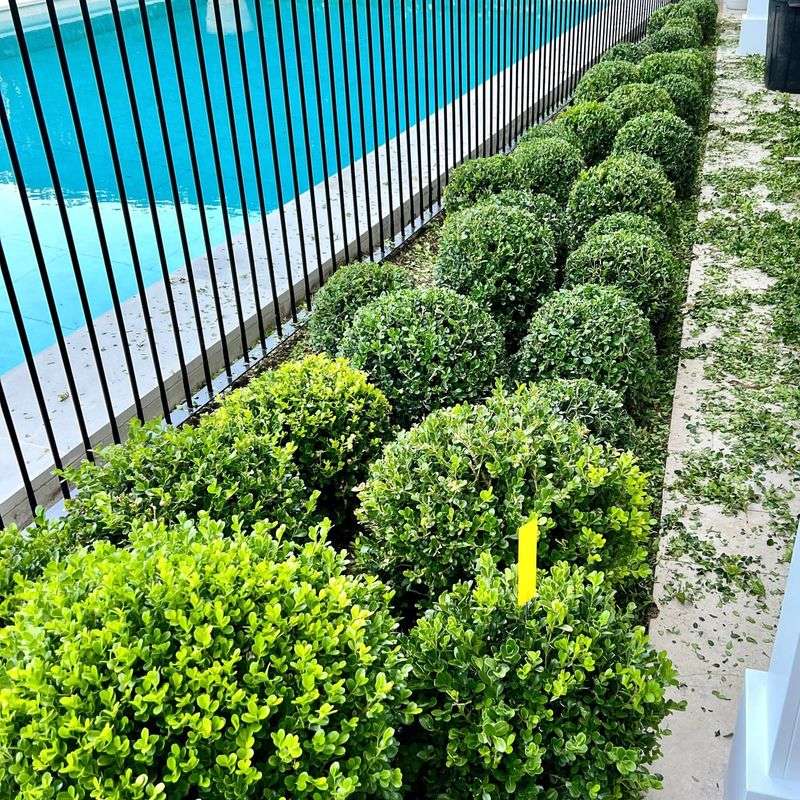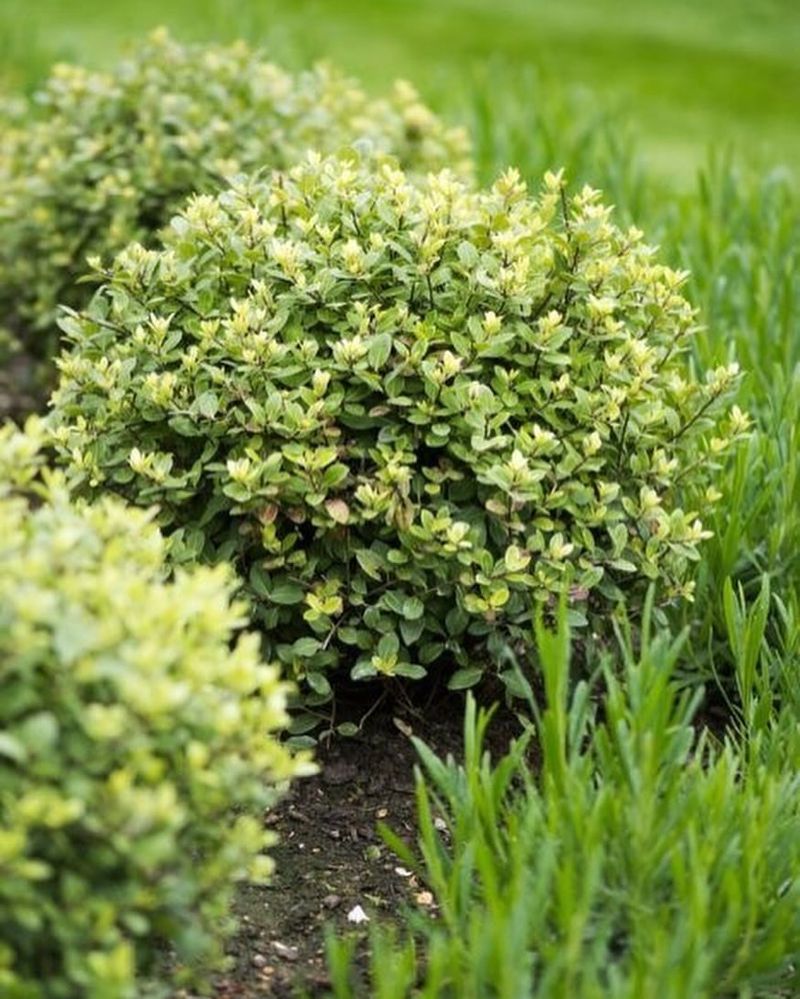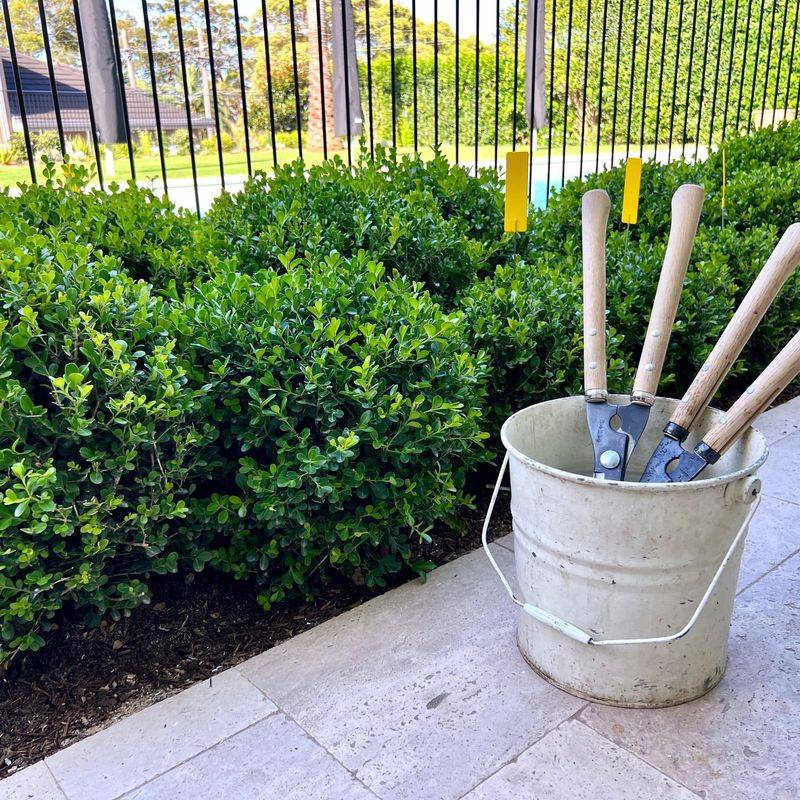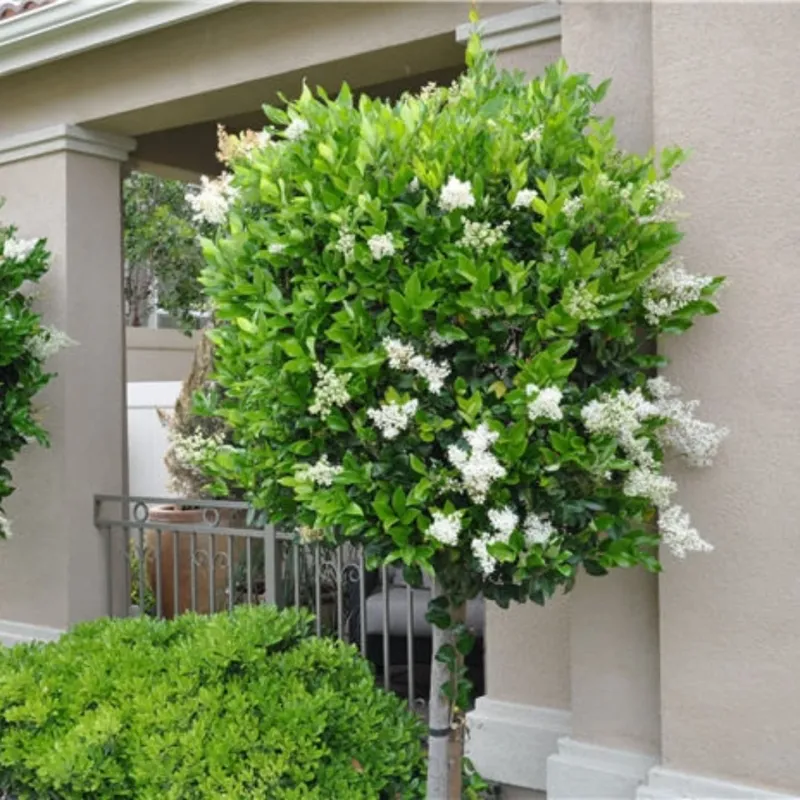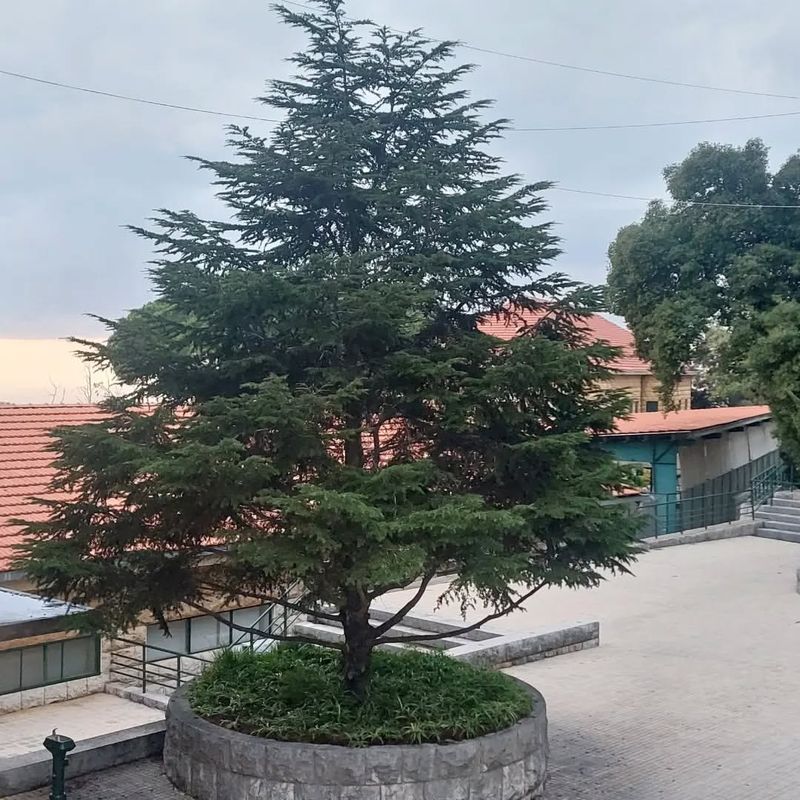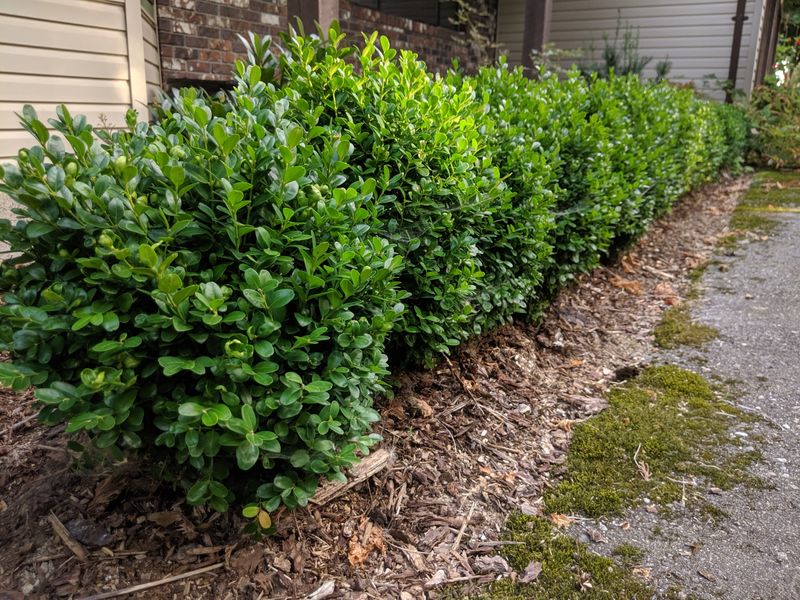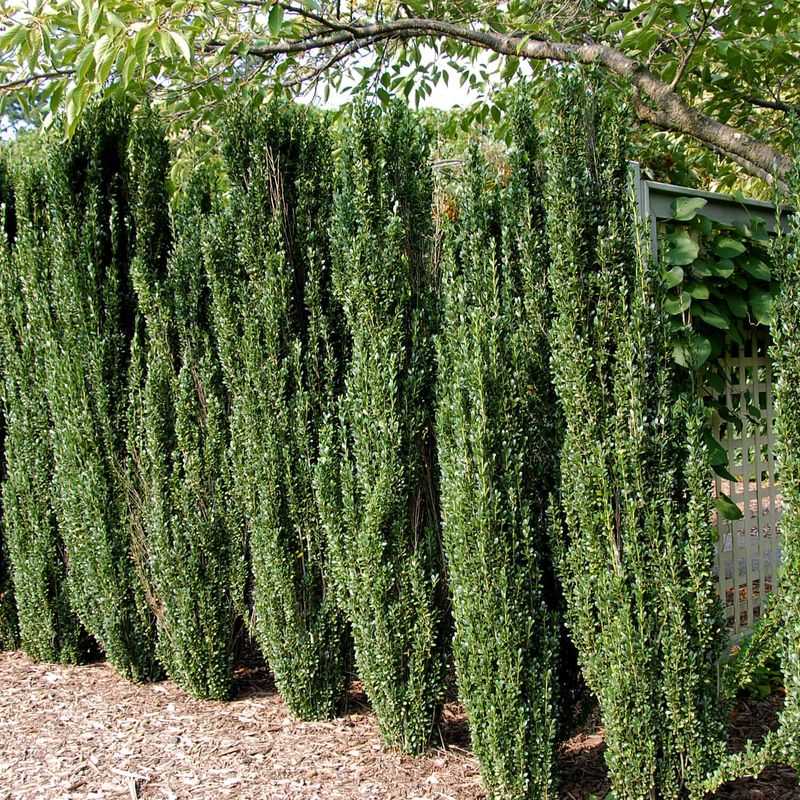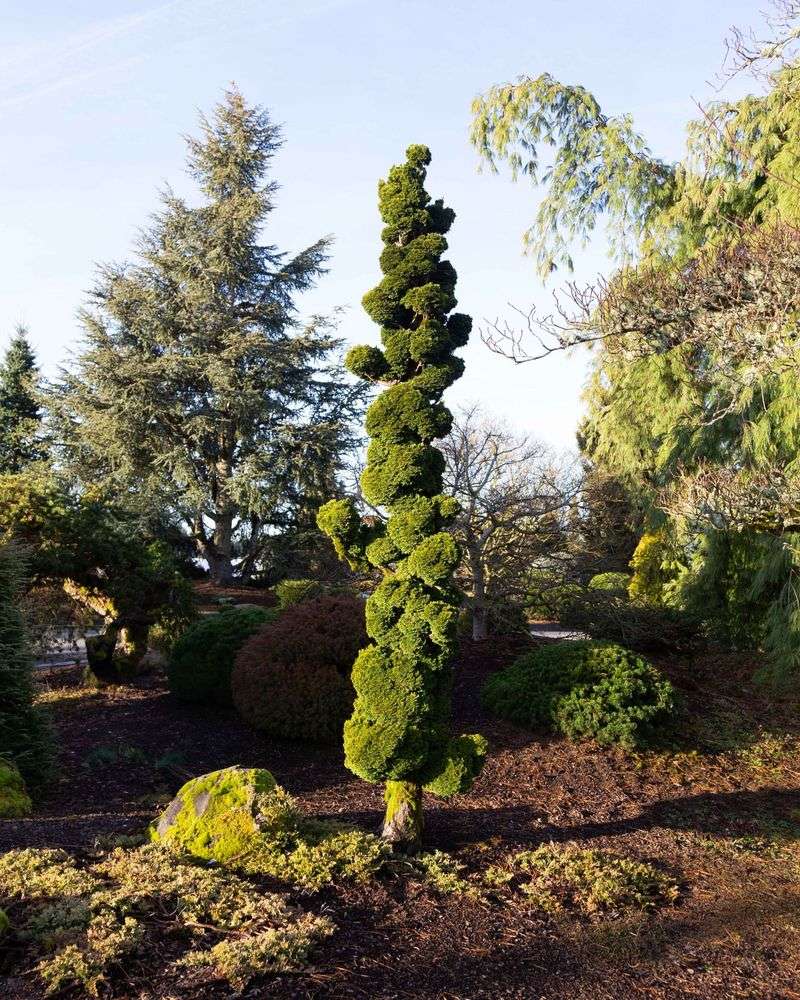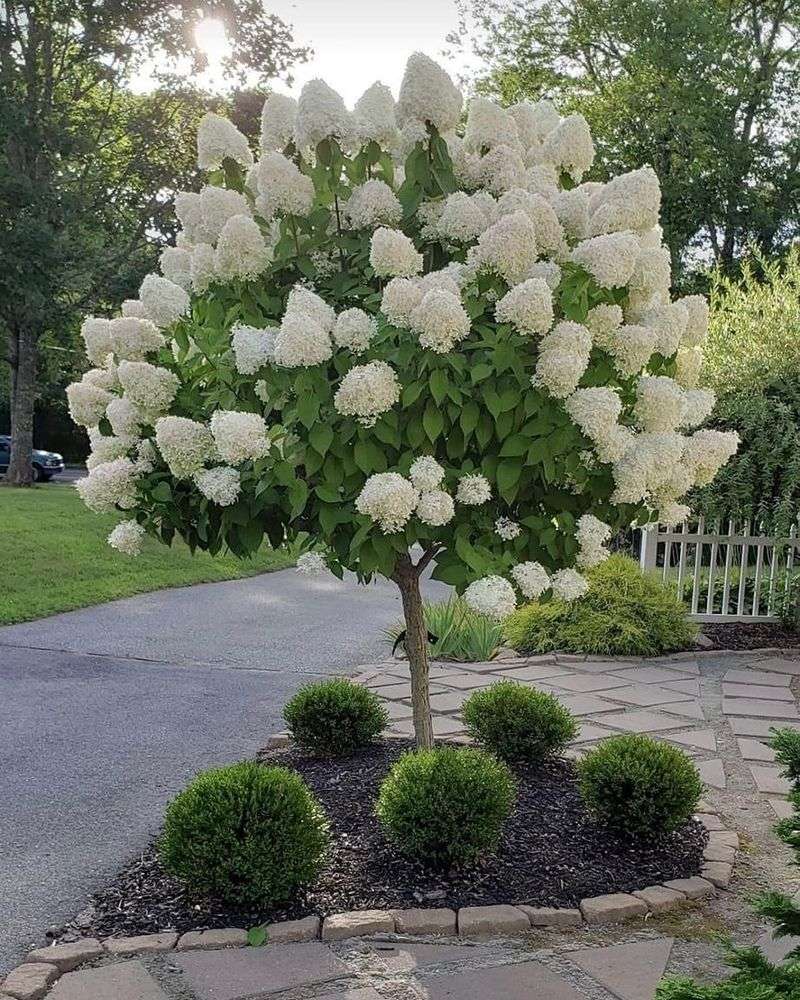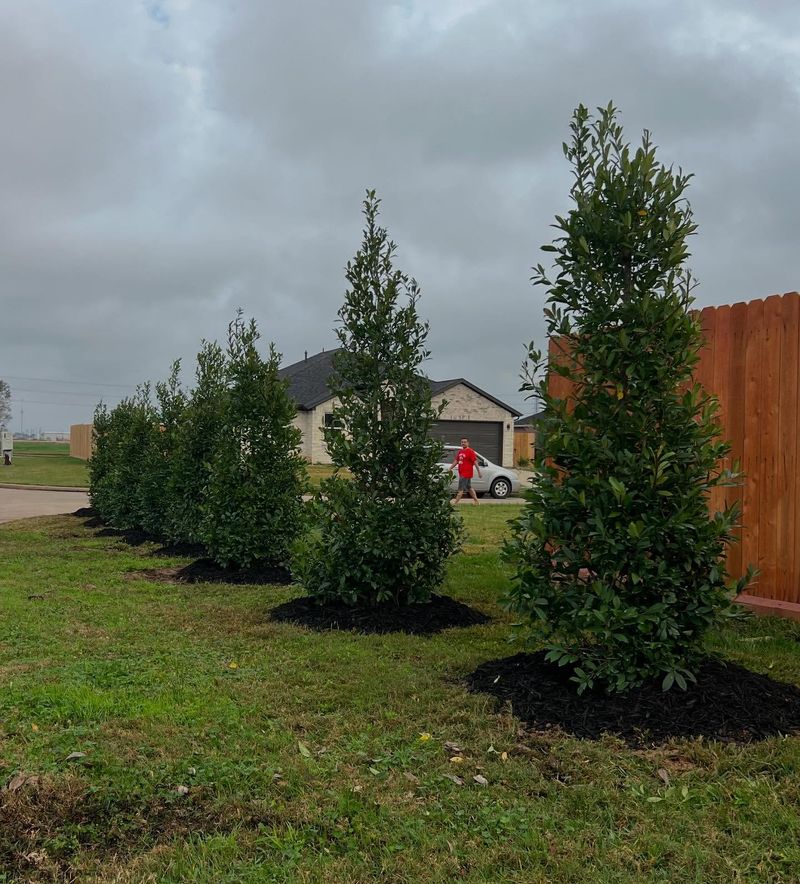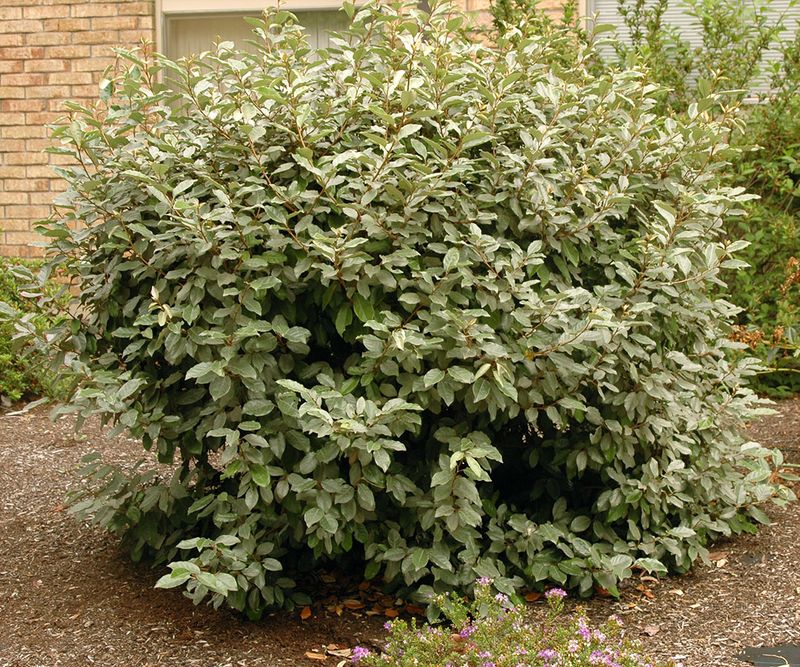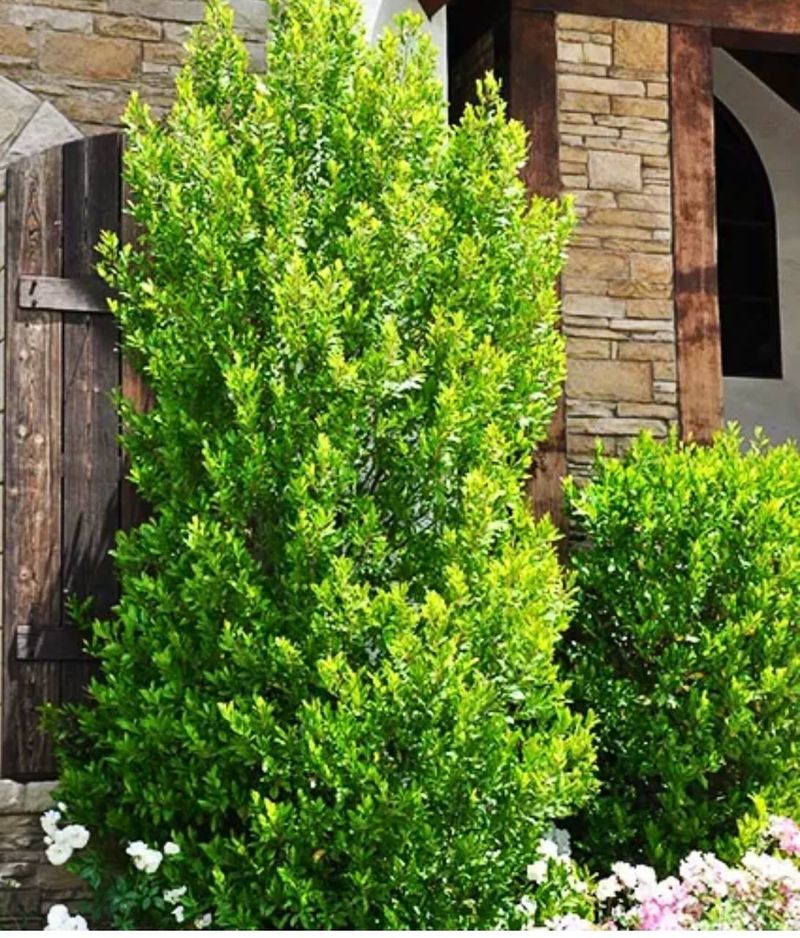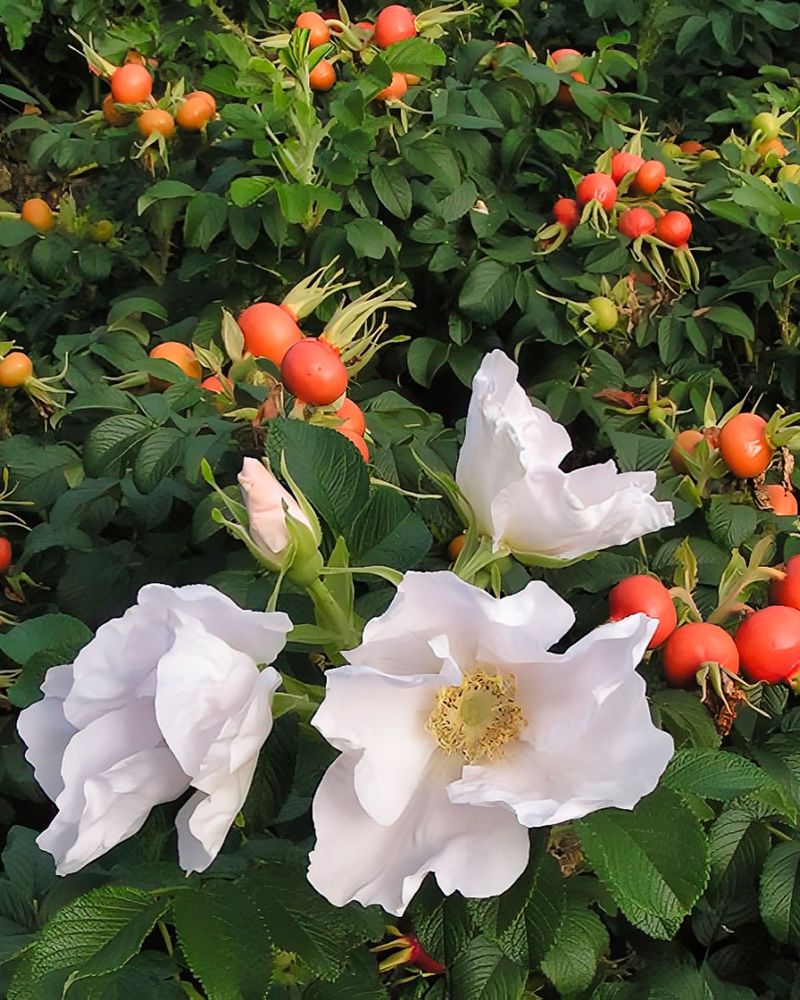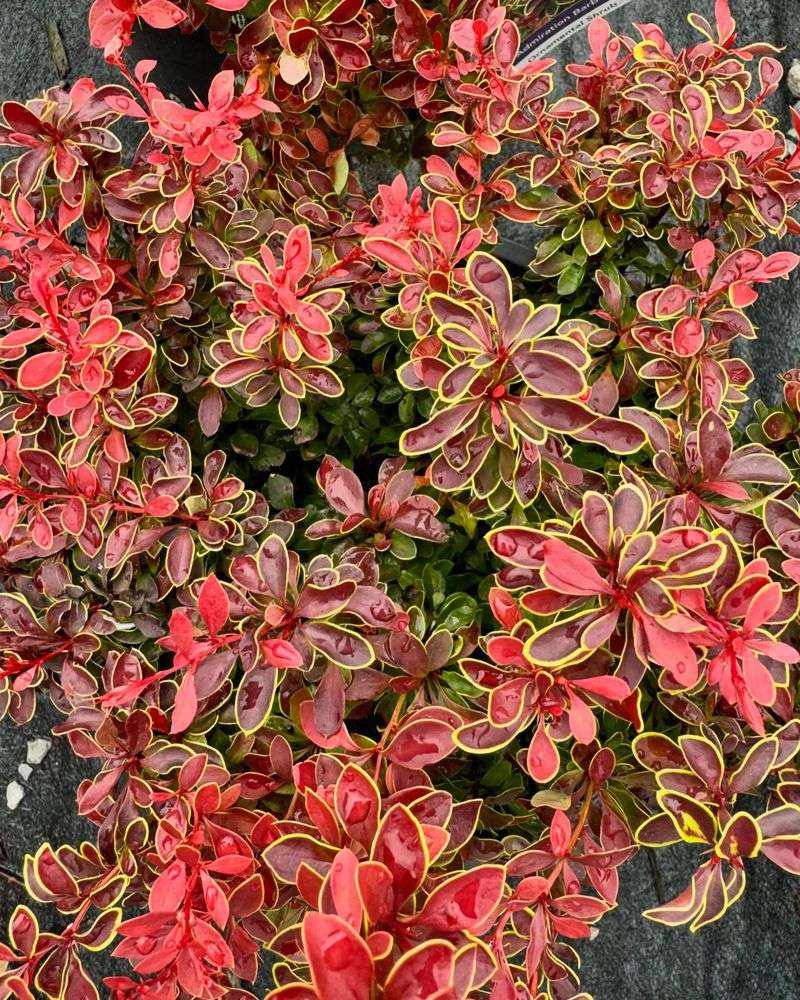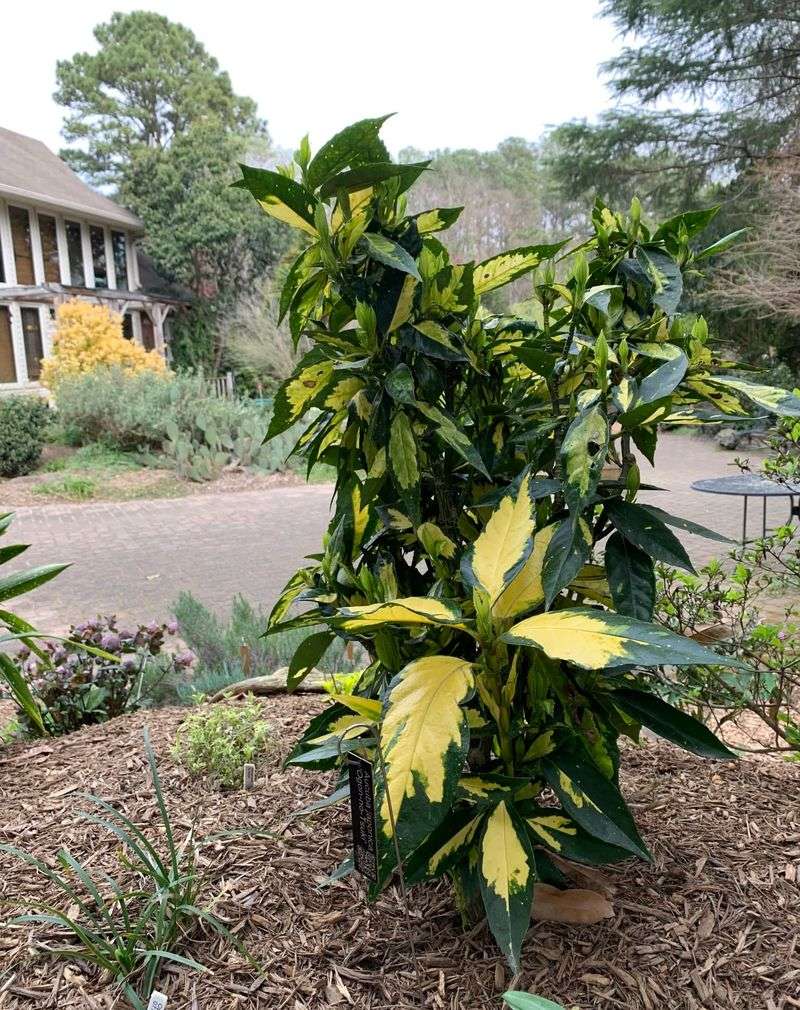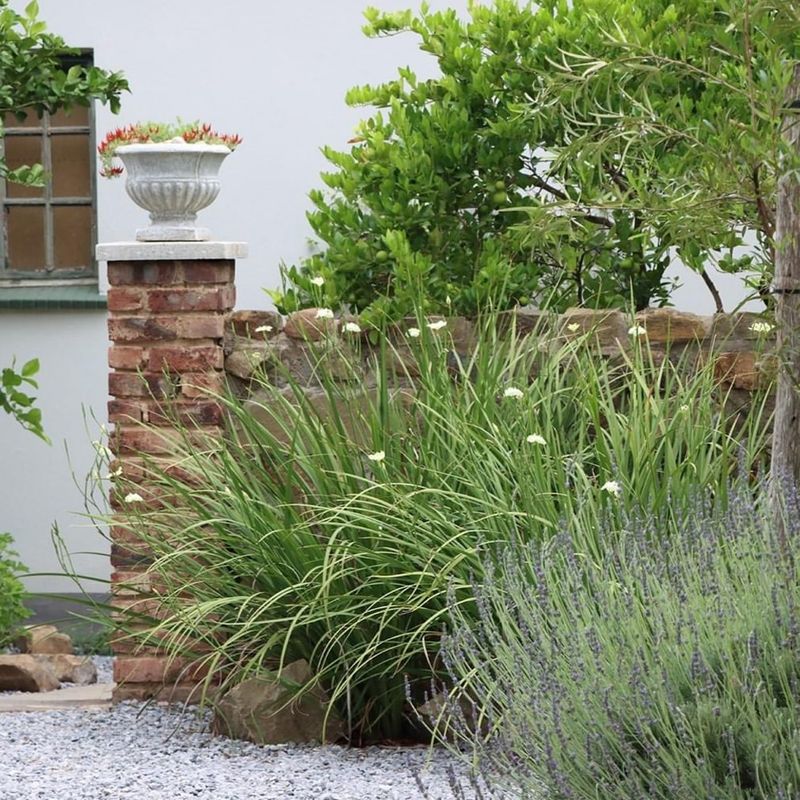Transform your garden into a mesmerizing display of art and nature with topiary trees and shrubs. These living sculptures offer elegance, structure, and creativity to any outdoor space. Whether you’re a seasoned gardener or a beginner, topiaries can be shaped into stunning forms that will captivate your imagination and enhance your garden’s appeal.
1. Boxwood (Buxus sempervirens)
Boxwood is a staple in topiary art, revered for its dense foliage and versatility. Its small leaves allow for intricate designs, making it a favorite among gardeners. In formal gardens, boxwood spheres or hedges create a refined look.
This evergreen shrub thrives in well-drained soil and can be shaped into various forms, from spirals to animals. Regular pruning helps maintain its shape and encourages healthy growth. Boxwood is perfect for creating elegant borders or standalone pieces that draw attention. With minimal care, it offers year-round beauty and structure.
2. Yew (Taxus baccata)
Yew is a classic choice for topiary due to its hardiness and fine, dark green needles. This slow-growing conifer is ideal for shaping into towering sculptures or low hedges. Its dense foliage makes it perfect for detailed designs.
In landscapes, yew topiaries can serve as focal points or elegant backdrops. They grow well in a variety of soils and are forgiving to pruning. Yew’s longevity and versatility make it a timeless choice for garden artistry, adding a touch of sophistication and historical charm.
3. Holly (Ilex aquifolium)
Holly’s glossy leaves and bright red berries make it a popular choice for topiary. With its natural pyramid shape, it’s easy to maintain as a festive cone or sphere.
This evergreen shrub thrives in well-drained soil and adds a splash of color to winter gardens. Holly is perfect for creating seasonal displays, offering year-round interest. Its prickly leaves deter pests, making it a practical and decorative addition. Whether in pots or garden beds, holly topiary provides an eye-catching feature with minimal upkeep.
4. Privet (Ligustrum)
Privet is renowned for its fast growth and adaptability, making it a favorite for topiary novices. Its small, lush leaves form a dense canopy, ideal for shaping into geometric designs or whimsical forms.
Regular trimming keeps privet topiary looking sharp and encourages bushy growth. It’s perfect for creating privacy screens or decorative hedges. In urban gardens, privet’s resilience makes it a practical choice. Despite its rapid growth, it requires little maintenance, offering an affordable and attractive option for creative garden design.
5. Juniper (Juniperus)
Juniper offers a range of options for topiary, with varieties suited for different climates and styles. Its needle-like foliage and robust growth make it suitable for shaping into cones, spirals, or abstract forms.
In rock gardens, juniper topiary adds vertical interest and an evergreen touch. It’s drought-tolerant and thrives in well-drained soil, requiring minimal watering. Juniper’s hardy nature and unique appearance make it a captivating choice for both traditional and modern landscapes, enhancing texture and color all year round.
6. Bay Laurel (Laurus nobilis)
Bay laurel is favored for its aromatic leaves and elegant appearance. This versatile shrub can be pruned into striking shapes, such as spirals and standards, making it a popular choice for patio displays.
Its glossy leaves provide year-round greenery and can be used in cooking, adding a culinary twist to its appeal. Bay laurel thrives in sunny spots with well-drained soil, offering a touch of the Mediterranean. As a potted topiary, it adds sophistication and functionality, serving as both a decorative and practical garden feature.
7. Rosemary (Rosmarinus officinalis)
Rosemary brings fragrance and flavor to topiary art. This hardy herb can be pruned into compact spheres or whimsical shapes, adding charm to herb gardens or patios.
Its needle-like leaves emit a delightful aroma, making it a sensory delight. Rosemary thrives in sunny, well-drained locations and is drought-tolerant, requiring minimal care. Beyond aesthetics, its leaves can be harvested for culinary use, offering a dual-purpose addition. Rosemary topiary combines beauty and utility, making it an engaging and practical choice for creative gardeners.
8. Lavender (Lavandula)
Lavender’s soothing scent and vibrant blooms make it a favored choice for topiary. This aromatic herb can be shaped into mounds or small hedges, bringing a touch of Provence to gardens.
Lavender thrives in sunny, well-drained soil and is relatively low-maintenance. Its silver-green foliage and purple flowers create visual contrast and attract pollinators. Lavender topiary adds color and fragrance to pathways and patios. With regular pruning, it maintains its shape and encourages blooming, making it a delightful and versatile garden addition.
9. Euonymus
Euonymus offers vibrant foliage and adaptability, making it a versatile topiary plant. Its variegated leaves add interest and can be shaped into cubes, balls, or intricate designs.
In formal gardens, euonymus topiary provides structure and color, creating visual appeal. It’s tolerant of various soil types and requires regular trimming to maintain its shape. Euonymus is suited for hedges or standalone pieces, offering year-round interest. Its diverse forms and resilient nature make it an excellent choice for gardeners seeking creativity and elegance.
10. Japanese Holly (Ilex crenata)
Japanese holly is a staple in traditional Japanese gardens, valued for its small, glossy leaves and compact growth. This evergreen shrub is ideal for creating intricate shapes, such as tiered forms or low hedges.
In Zen gardens, Japanese holly topiary adds structure and tranquility. It thrives in well-drained soil and partial sun, requiring minimal maintenance. Its tidy appearance and adaptability make it a popular choice for urban gardens. Japanese holly offers elegance and cultural significance, enhancing any landscape with its timeless beauty.
11. Dwarf Alberta Spruce (Picea glauca ‘Conica’)
Dwarf Alberta Spruce is admired for its conical shape and slow growth, making it ideal for topiary art. Its dense, green needles create a lush appearance, perfect for small gardens or containers.
This evergreen conifer thrives in sunny locations with well-drained soil. It requires minimal pruning, maintaining its natural shape with ease. Dwarf Alberta Spruce topiary adds a festive touch to landscapes, resembling miniature Christmas trees. Its compact size and year-round beauty make it a charming addition to patios or entryways, offering elegance and simplicity.
12. Teucrium (Teucrium fruticans)
Teucrium, with its silvery foliage and blue flowers, offers a unique twist to topiary gardening. This hardy shrub is perfect for shaping into low mounds or hedges, adding texture and color contrasts.
Thriving in sunny, well-drained spots, teucrium is drought-tolerant and requires little maintenance. Its aromatic leaves and vibrant blooms attract pollinators, enhancing biodiversity. Teucrium topiary is ideal for Mediterranean gardens, offering a touch of rustic charm. Its resilience and ornamental appeal make it a delightful option for creative gardeners seeking diversity.
13. Myrtle (Myrtus communis)
Myrtle is valued for its aromatic leaves and delicate white flowers, making it a charming topiary plant. This evergreen shrub can be shaped into balls or cones, adding elegance to courtyards or patios.
Myrtle thrives in well-drained soil and sunny locations, requiring regular pruning to maintain its form. Its fragrant leaves and ornamental value make it a favorite in Mediterranean gardens. Myrtle topiary offers a blend of beauty and tradition, enhancing outdoor spaces with its classic appeal and enchanting aroma.
14. Thuja (Thuja occidentalis)
Thuja, also known as arborvitae, is a popular choice for topiary due to its dense foliage and vertical growth. This evergreen conifer can be shaped into columns or spirals, providing height and structure to landscapes.
Thriving in well-drained soil, thuja requires minimal pruning to retain its form. It’s perfect for creating privacy screens or elegant focal points. Thuja topiary adds architectural interest to gardens, offering year-round greenery and resilience. Its classic look and easy maintenance make it a favorite among gardeners seeking timeless elegance.
15. Olea europaea (Olive)
Olive trees bring Mediterranean charm and historical significance to topiary art. With their silvery leaves and gnarled trunks, they add texture and character to gardens.
Olives can be shaped into spheres or bonsai forms, thriving in sunny, well-drained spots. They require regular pruning to maintain their shape and encourage fruiting. Olive topiary offers a blend of beauty and functionality, providing both aesthetic appeal and a potential harvest. Its timeless allure and cultural heritage make it a unique and engaging choice for creative gardeners.
16. Camellia (Camellia japonica)
Camellia is cherished for its lush foliage and stunning blooms, making it a captivating choice for topiary. This evergreen shrub can be shaped into domes or standards, adding elegance to gardens or patios.
Camellia thrives in acidic, well-drained soil and partial shade, requiring regular pruning to maintain its shape. Its vibrant flowers add seasonal color, making it a focal point in any landscape. Camellia topiary combines beauty and sophistication, offering a touch of luxury and botanical artistry. Its timeless charm enhances both traditional and modern garden designs.
17. Buxus microphylla japonica (Japanese Boxwood)
Japanese boxwood is admired for its small leaves and compact growth, making it perfect for intricate topiary designs. This evergreen shrub is ideal for creating knot gardens or low hedges, offering a refined and formal appearance.
Thriving in well-drained soil, it requires regular pruning to maintain its form and encourage dense growth. Japanese boxwood topiary provides structure and elegance, enhancing garden layouts with its timeless appeal. Its versatility and resilience make it a popular choice for gardeners seeking precision and artistry in their outdoor spaces.
18. Pittosporum (Pittosporum tenuifolium)
Pittosporum offers versatility and ornamental value, making it a delightful choice for topiary. With its glossy leaves and airy growth, it can be shaped into balls or informal hedges, adding texture and movement to gardens.
This evergreen shrub thrives in well-drained soil and full sun, requiring moderate pruning to maintain its shape. Its fragrant flowers and lush foliage enhance sensory appeal, creating inviting outdoor spaces. Pittosporum topiary offers beauty and grace, providing a natural, flowing element to garden designs. It’s perfect for adding a touch of whimsy.
19. Buxus microphylla (Korean Boxwood)
Korean boxwood is revered for its hardiness and adaptability, making it a reliable choice for topiary. Its small, glossy leaves create a dense texture, perfect for angular or geometric designs.
Thriving in various soil types, it requires regular trimming to maintain its form and encourage bushy growth. Korean boxwood topiary offers structure and elegance, enhancing formal gardens or pathways with its classic charm. Its resilience and versatility make it a popular choice for gardeners seeking precision and artistry in their outdoor spaces.
20. Ligustrum japonicum (Japanese Privet)
Japanese privet is known for its rapid growth and glossy foliage, making it a versatile topiary plant. This evergreen shrub can be shaped into pyramids or hedges, adding form and greenery to urban gardens.
It thrives in well-drained soil and full sun, requiring regular pruning to maintain its shape and size. Japanese privet topiary provides a blend of beauty and functionality, offering privacy and elegance. Its adaptability to various environments makes it a practical choice for gardeners seeking creativity and resilience.
21. Cedrus libani (Cedar of Lebanon)
Cedar of Lebanon is a majestic choice for topiary, known for its grand stature and distinctive silhouette. This evergreen conifer can be shaped into tiered forms, adding height and drama to landscapes.
Thriving in well-drained soil and full sun, it requires careful pruning to maintain its shape and encourage strong growth. Cedar of Lebanon topiary offers architectural interest and historical charm, creating a focal point in gardens. Its timeless beauty and cultural significance make it a unique choice for creative gardeners.
22. Buxus sempervirens ‘Suffruticosa’ (English Boxwood)
English boxwood is a classic choice for topiary, valued for its dense foliage and compact growth. This evergreen shrub can be shaped into spheres or low hedges, offering a refined and formal appearance.
Thriving in well-drained soil, it requires regular pruning to maintain its form and encourage bushy growth. English boxwood topiary provides structure and elegance, enhancing garden layouts with its timeless appeal. Its resilience and versatility make it a popular choice for gardeners seeking precision and artistry in their outdoor spaces.
23. Ilex crenata ‘Sky Pencil’ (Sky Pencil Holly)
Sky Pencil Holly’s narrow, upright growth makes it an intriguing choice for topiary. Its glossy, dark green leaves create a sleek and modern appearance, perfect for contemporary gardens.
This evergreen shrub thrives in well-drained soil and partial sun, requiring minimal pruning to maintain its shape. Sky Pencil Holly topiary adds vertical interest and architectural elegance, offering a unique focal point. Its distinctive form and ease of care make it a popular choice for gardeners seeking minimalism and sophistication.
24. Chamaecyparis obtusa (Hinoki Cypress)
Hinoki Cypress is admired for its graceful form and lush, dark green foliage, making it suitable for topiary art. This evergreen conifer can be shaped into cascading forms or bonsai, adding elegance to traditional gardens.
Thriving in well-drained soil and partial shade, it requires careful pruning to maintain its form and encourage healthy growth. Hinoki Cypress topiary offers beauty and tranquility, enhancing landscapes with its serene presence. Its timeless allure and cultural significance make it a unique choice for creative gardeners.
25. Hydrangea paniculata ‘Limelight’
Limelight Hydrangea is cherished for its stunning blooms and robust growth, making it a captivating choice for topiary. This deciduous shrub can be shaped into balls or standards, adding color and volume to gardens.
Thriving in well-drained soil and partial sun, it requires regular pruning to maintain its shape and encourage blooming. Limelight Hydrangea topiary combines beauty and vibrancy, offering a touch of luxury and botanical artistry. Its unique blooms and easy maintenance make it a favorite among gardeners seeking seasonal interest.
26. Taxus cuspidata (Japanese Yew)
Japanese Yew is a versatile choice for topiary due to its dense foliage and adaptability. This evergreen shrub can be shaped into spirals or low hedges, adding form and greenery to landscapes.
It thrives in well-drained soil and partial sun, requiring regular pruning to maintain its shape and encourage bushy growth. Japanese Yew topiary offers structure and elegance, enhancing garden designs with its timeless appeal. Its resilience and versatility make it a popular choice for gardeners seeking creativity and artistry.
27. Elaeagnus pungens (Silverberry)
Silverberry is valued for its silvery foliage and fragrant blooms, making it a charming topiary plant. This evergreen shrub can be shaped into balls or informal hedges, adding texture and color to gardens.
Thriving in well-drained soil and full sun, it requires regular pruning to maintain its form and encourage flowering. Silverberry topiary offers beauty and sensory appeal, enhancing landscapes with its unique foliage and aroma. Its hardiness and ornamental value make it a favorite among gardeners seeking diversity and elegance.
28. Prunus laurocerasus (Cherry Laurel)
Cherry Laurel is a popular choice for topiary, known for its glossy leaves and robust growth. This evergreen shrub can be shaped into hedges or standards, adding structure and greenery to landscapes.
It thrives in well-drained soil and partial shade, requiring regular pruning to maintain its shape and encourage bushy growth. Cherry Laurel topiary provides beauty and functionality, offering privacy and elegance. Its adaptability and ease of care make it a practical choice for gardeners seeking creativity and resilience.
29. Rosa rugosa (Rugosa Rose)
Rugosa Rose is cherished for its fragrant blooms and hardy nature, making it a unique choice for topiary. This deciduous shrub can be shaped into low mounds or informal hedges, adding color and texture to gardens.
Thriving in well-drained soil and full sun, it requires regular pruning to maintain its shape and encourage flowering. Rugosa Rose topiary offers beauty and fragrance, enhancing landscapes with its vibrant blooms and aroma. Its resilience and ornamental value make it a favorite among gardeners seeking diversity and charm.
30. Berberis thunbergii (Barberry)
Barberry is known for its colorful foliage and thorny branches, making it a distinctive choice for topiary. This deciduous shrub can be shaped into angular forms or formal hedges, adding texture and color contrasts.
Thriving in well-drained soil and full sun, it requires regular pruning to maintain its form and encourage bushy growth. Barberry topiary provides beauty and functionality, offering privacy and visual interest. Its bold appearance and ease of care make it a popular choice for gardeners seeking creativity and resilience.
31. Aucuba japonica (Japanese Aucuba)
Japanese Aucuba is valued for its glossy, variegated leaves and shade tolerance, making it a versatile topiary plant. This evergreen shrub can be shaped into balls or informal hedges, adding texture and color to gardens.
Thriving in well-drained soil and partial shade, it requires regular pruning to maintain its form and encourage bushy growth. Japanese Aucuba topiary offers beauty and resilience, enhancing landscapes with its unique foliage and adaptability. Its ornamental value and ease of maintenance make it a favorite among gardeners seeking diversity.
32. Dietes bicolor (African Iris)
African Iris is admired for its striking blooms and architectural form, making it a captivating choice for topiary. This perennial can be shaped into fans or informal hedges, adding color and structure to gardens.
Thriving in well-drained soil and full sun, it requires regular pruning to maintain its shape and encourage flowering. African Iris topiary offers beauty and vibrancy, enhancing landscapes with its unique blooms and foliage. Its resilience and ornamental value make it a popular choice for gardeners seeking diversity and elegance.

